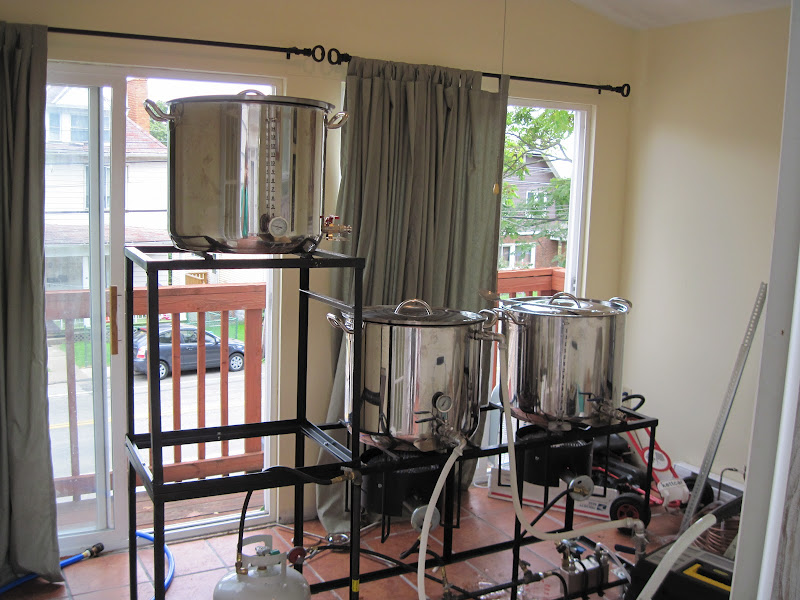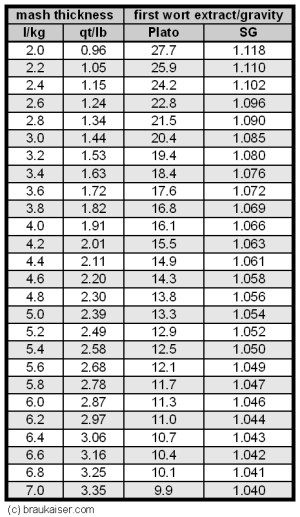So this past sunday I went ahead and brewed this - https://www.homebrewtalk.com/f68/chocolate-coffee-stout-chocolate-jitterz-35562/
Plugging this into brewtarget, I should have got around 1.073 at 72% efficiency. I ended up with 1.057 (taken from chilled wort, before adding yeast) instead, so about 56.5% efficiency.
My setup is here (man do I need to update these photos) - https://www.homebrewtalk.com/f51/my-brew-stand-few-questions-318866/
Actually here is a better picture

My process was:
#1 heating up all water needed to about 168, draining the suggested 18.29 (so 1.25 qts/per lb) quarts of mash water to the mash tun.
#2 Mash for an hour, recirculating the entire time
#3 Drain the mash tun into the brew kettle, bnegin heating that water
#4 Drain remaining 4.5 gallons into mash tun and recirculate for a few minutes
#5 Drain mash tun into BK to get to 7 gallons pre boil.
As you can see I was planning on batch sparging. My question is, can I attribute the low efficiency to not giving the sparge more time before draining it into the BK?
Plugging this into brewtarget, I should have got around 1.073 at 72% efficiency. I ended up with 1.057 (taken from chilled wort, before adding yeast) instead, so about 56.5% efficiency.
My setup is here (man do I need to update these photos) - https://www.homebrewtalk.com/f51/my-brew-stand-few-questions-318866/
Actually here is a better picture

My process was:
#1 heating up all water needed to about 168, draining the suggested 18.29 (so 1.25 qts/per lb) quarts of mash water to the mash tun.
#2 Mash for an hour, recirculating the entire time
#3 Drain the mash tun into the brew kettle, bnegin heating that water
#4 Drain remaining 4.5 gallons into mash tun and recirculate for a few minutes
#5 Drain mash tun into BK to get to 7 gallons pre boil.
As you can see I was planning on batch sparging. My question is, can I attribute the low efficiency to not giving the sparge more time before draining it into the BK?





